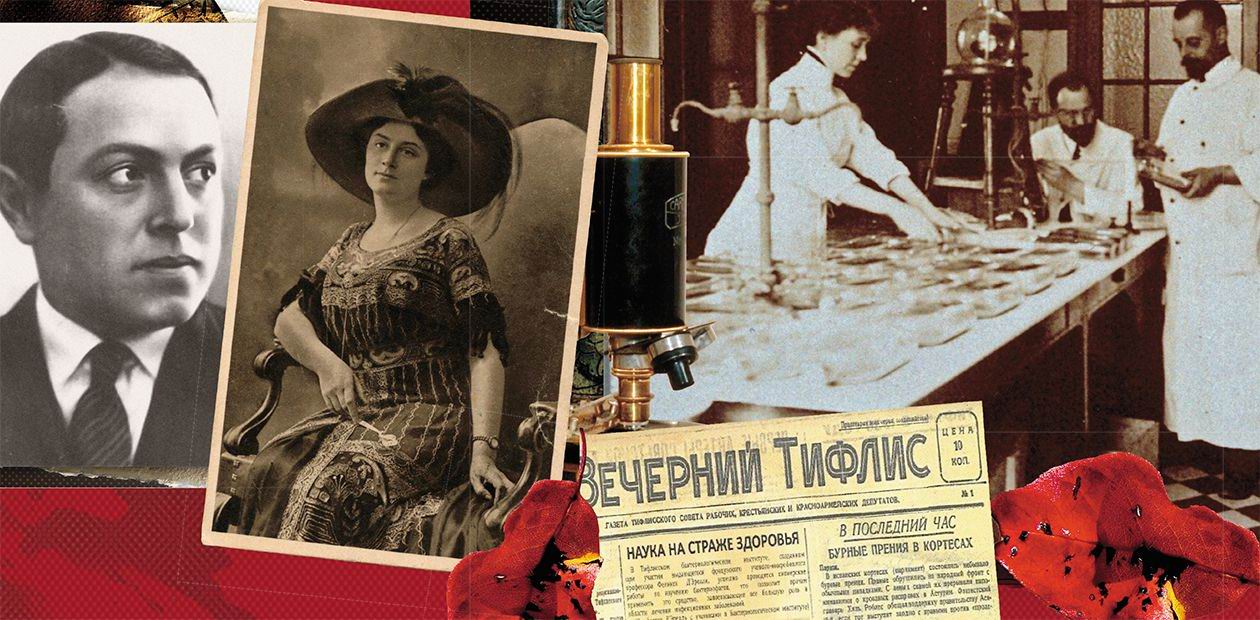Under the Sign of Bacteriophage: Paris – Tbilisi
Many pages in the history of science read like a fascinating novel, and this is exactly the case with the discovery of bacteriophages, or viruses that infect bacteria. The two most significant figures in the history of this discovery—a brilliant self-educated Frenchman, known as Félix d’Hérelle, and a Soviet microbiologist George Eliava, who was part of a well-known Georgian family—were shrouded in mystery and legends even during their lifetime, and some dramatic and tragic episodes in their lives would forever remain behind the scenes, in contrast to their recognized scientific achievements
By and large, this story began as early as in the 17th century, when Antonie van Leeuwenhoek, a successful cloth merchant from the Dutch city of Delft, saw in the eyepiece of his self-made microscope the swift-moving tiny “animalcules,” little creatures without a head or tail, which looked like no other known animal. That was when the mankind first learned about their powerful, though invisible to the naked eye, neighbors on this planet—the vast world of bacteria, which lived virtually everywhere—in the soil, pond mud, rotten meat, dental plaque...
Surprisingly, people long thought that these microscopic creatures were harmless, i.e., had nothing to do with human diseases. Almost until the end of the 18th century, medicine was dominated by the miasma theory of spontaneous generation of disease, according to which all diseases had only an internal cause. The idea of a live causative agent triumphed in the first half of the 19th century, when experiments with self-infection and simulation of diseases in animals proved the pathogenic role of microorganisms. An important contribution had come from Russian scientists, such as the military doctor Danilo Samoilovich, who proved during a plague epidemics in Moscow in the early 1770s that the infection was transmitted through direct contact with a patient or their belongings. Although Samoilovich could not actually “see” the plague agent, he was the first to propose the idea of preventive vaccination by using an attenuated contagious matter.
As is known, vaccination was officially proved effective for the prevention of smallpox, a dangerous human infection, by an English physician Edward Jenner in 1796. However, it was only a hundred years later that scientists discovered a new type of animalcules causing this and many other diseases; they were so small that one could see them neither through Leeuwenhoek’s «magnifying glass» nor through much more powerful optical microscopes. At the end of the 19th century, the Russian plant physiologist Dmitry Ivanovsky, Dutch botanist and microbiologist Martinus Beijerinck and German microbiologists Friedrich Loeffler and Paul Frosch discovered tiny organisms that could easily pass through the pores of porcelain filters, which retained the smallest bacteria. Beijerinck called these organisms viruses (from the Latin word virus meaning ‘poison’); this word was also used by the founder of microbiology and immunology Louis Pasteur to designate a contagious matter.
By the way, it took some time for the scientific community to accept the very idea of existence of fundamentally new organisms in the microcosm. In the early 20th century, there were scientists who speculated that viruses were either very small bacteria or toxic substances released inside doomed cells due to unknown factors. An end to this dispute was put by the discovery that those tiny creatures could infect not only plants and animals but also other microorganisms.
The unknown matter with an antibacterial effect was first mentioned in 1896 by an English bacteriologist Ernest Hankin in his study of how the water of individual Indian rivers affected the causative agent of cholera. The water retained its healing properties after passing through a bacterial filter, but lost them after boiling. The scientist suggested that that phenomenon, which was later called Hankin’s paradox, held back the spread of cholera among the local population, but gave no explanation. Two years later, the Russian microbiologist Nikolay Gamaleya described the dissolution (lysis) of anthrax bacilli in distilled water under the influence of an unknown agent and the ability of the resulting solution to destroy fresh cultures of the pathogen.
However, the mechanism underlying this phenomenon was scrutinized only decades later by the English microbiologist Frederik Twort (with A. Lond) and Canadian–French scientist Félix d’Hérelle. These scientists described, independently of each other, filter transmissible agents that cause the destruction of bacterial cells. Following the writings by d’Hérelle, they were called bacteriophages (literally, the eaters of bacteria).
Agave aperitif
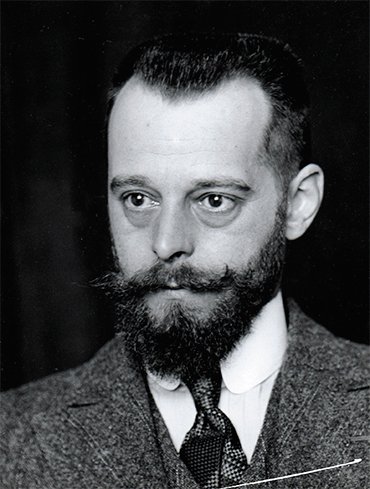 An amazing fact: the man who is deservedly considered one of the discoverers of bacteriophages and who was nominated eight (!) times for the Nobel Prize had no university degree in biology; what is more—his only education was secondary school! With a striking appearance of a Spanish hidalgo, this brilliant self-educated man had a heart of a true adventurer. This image derives from the descriptions of d’Hérelle’s life, especially its early period, of which there is contradictory information in the currently available literature; therefore, we can only roughly outline the path of his life.
An amazing fact: the man who is deservedly considered one of the discoverers of bacteriophages and who was nominated eight (!) times for the Nobel Prize had no university degree in biology; what is more—his only education was secondary school! With a striking appearance of a Spanish hidalgo, this brilliant self-educated man had a heart of a true adventurer. This image derives from the descriptions of d’Hérelle’s life, especially its early period, of which there is contradictory information in the currently available literature; therefore, we can only roughly outline the path of his life.
Thus, some authors claim that Félix was born in Montreal in a family of French immigrants and moved to Paris at an age of six, when his father died. However, the latest version says that d’Hérelle, whose real name was Hubert Augustin Félix Haerens, was born on April 25, 1873 in Paris by an unknown father and 24-year-old Augustine Haerens, a rentier, as indicated in his birth certificate. It is true that he only had secondary education; he went to two secondary schools in Paris, including the Lycée Louis-le-Grand, where he did not show much diligence. Later, he attended lectures on medicine in Europe for a few months, presumably, at the University of Bonn. There is evidence that at an of age 20, he and his younger brother Daniel volunteered to the French army, from which he deserted a year later for unknown reasons.
Félix always had a passion for traveling: as a schoolboy, he rode by bicycle across Western Europe and then traveled to South America, Greece, Belgium... In Turkey, he met his future wife, Marie.
At the age of 24, Félix, who was then a husband and father, emigrated to Canada, where he changed his nationality and adopted new name d’Hérelle (when using English typewriters, he often wrote it as Herelle), probably, for fear of the consequences of his desertion from the army. He was lucky at first: a friend helped d’Hérelle obtain an order of the Canadian government to study the fermentation and distillation of maple syrup in the production of schnapps. In 1899, he even took part in a geological expedition in search of gold on the Labrador Peninsula in eastern Canada as a paramedic, although he had almost no special training. He and his brother invested the money earned in a chocolate factory, which almost immediately went bankrupt.
By that time, Félix was already a father of two daughters, and to provide for his family, he went... to the New World, where he began working under a contract with the Government of Guatemala as a bacteriologist in a metropolitan general hospital, where he treated malaria and yellow fever. Obviously, all this time d’Hérelle, who was far from medicine yet keen on microbiology, continued his self-education. At the same time, using his experience in alcohol production, d’Hérelle set himself to develop a process for producing whiskey from bananas. The life in this South American country, which by the end of the 19th century had gone through several civil wars and had become a symbol of chronic instability and civil strife, was far from civilized and simply safe, but it clearly appealed to Félix with his adventurous streak. He said that it was in Guatemala that he set off on his journey to the big science.
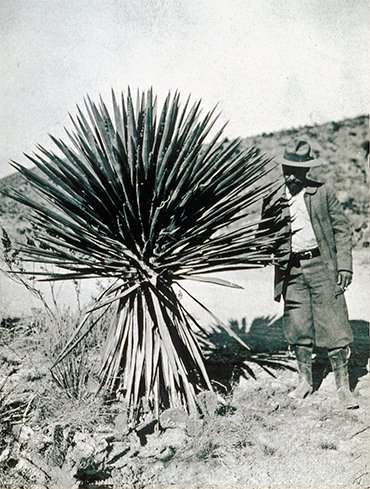 D’Hérelle’s alcohol career was on the rise: in 1907, at an age of 30, he took an offer of the Mexican government to design a technology to produce a strong alcoholic drink from agaves. This plant of the lily family is known to be a source not only of the rough sisal fiber but also of the famous tequila. D’Hérelle and his family moved to a sisal plantation in Yucatan, where he soon developed a new way to produce schnapps from agaves. The equipment for the mass production of the alcoholic drink was ordered in Paris, and the inventor himself went to the French capital.
D’Hérelle’s alcohol career was on the rise: in 1907, at an age of 30, he took an offer of the Mexican government to design a technology to produce a strong alcoholic drink from agaves. This plant of the lily family is known to be a source not only of the rough sisal fiber but also of the famous tequila. D’Hérelle and his family moved to a sisal plantation in Yucatan, where he soon developed a new way to produce schnapps from agaves. The equipment for the mass production of the alcoholic drink was ordered in Paris, and the inventor himself went to the French capital.
This trip marked the beginning of a new era in the life of Félix d’Hérelle. Paris was home to the famous Pasteur Institute, where he began spending all of his spare time, working as a voluntary assistant. When d’Hérelle returned to Mexico, he lost interest in his work at the new factory because it became “too boring.” Instead, he got fascinated by another, microbiological problem associated with the invasion of migratory locusts, who destroyed sisal plantations on the Yucatan Peninsula. He noticed that vast masses of the insect were dying from an unknown disease accompanied by severe intestinal lesions. He isolated from their dead bodies the Coccobacillus bacterium and proposed to use it as a means against this “plague of Egypt.”
This work had a fundamental effect on d’Hérelle’s life; in the meantime, we can only say that it was he who first proposed the idea of biological pest control. Although his later attempts to apply this method to combat locust infestation in Guatemala, Argentina and Tunisia were not fully successful, the name of Félix d’Hérelle became known in scientific circles. Until then, as they say in the French Wikipedia, his scientific career resembled that of a charlatan.
Thanks to the locust
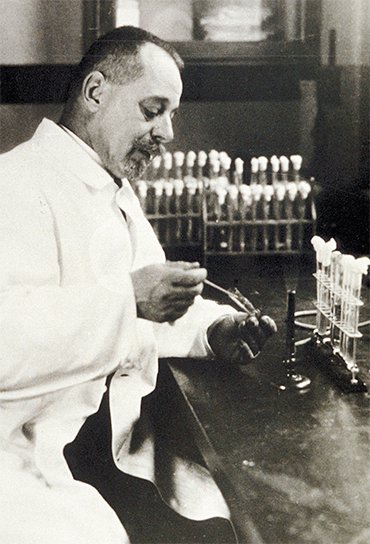 In 1911, the d’Hérelle family returned to Paris, and Félix began working at the Pasteur Institute on a method for preparing a vaccine in a model system consisting of Salmonella typhimurium and the house mouse, its natural host. In his spare time, he was examining dysentery patients in a cavalry squadron quartered near Paris.
In 1911, the d’Hérelle family returned to Paris, and Félix began working at the Pasteur Institute on a method for preparing a vaccine in a model system consisting of Salmonella typhimurium and the house mouse, its natural host. In his spare time, he was examining dysentery patients in a cavalry squadron quartered near Paris.
The 44-year-old d’Hérelle officially announced his discovery, which forever secured him a place on the scientific Olympus, in 1917. Doctor Roux, the director of the Pasteur Institute, presented to the Academy of Sciences d’Hérelle’s report on “an invisible antagonistic microbe of the dysentery bacillus.” In the text of his report, d’Hérelle called this organism a bacteriophage. According to his observations of bacillary dysentery patients, shortly before the disappearance of blood stool and their recovery, an agent capable of dissolving dysentery bacilli appeared in their intestines. This agent was not found in patients who died of dysentery. This agent, called a bacteriophage, had the ability to replicate itself through bacteria. The bacteriophage phenomenon could be reproduced in experimental conditions as clearly as in organisms. Subsequent experiments showed that the bacteriophage behaved as a creature endowed with life, like a tiniest microorganism parasitizing on bacteria. The bacteriophage was found to have a corpuscular structure and affect bacteria through its enzyme.
Félix d’Hérelle presented the results of his initial research on bacteriophages in his fundamental work The Bacteriophage (1922), which described in detail the lysis of the host bacterium, the isolation of phages from infectious bacteria, and the factors that regulate the stability of extracellular phage. A year before, d’Hérelle’s followers Richard Bruynoghe and Joseph Maisin officially reported successful treatment of staphylococcal skin infections with a staphylococcal phage. As public interest in phage therapy was growing, many private European companies began to mass produce commercial bacteriophage preparations. One of the first such manufacturers was the French Harmless Hair Dye Company, founded in 1909, which is now known all over the world as L’OrealAmazingly, d’Hérelle drew all these conclusions from empirical observations, intuition and common sense. It was only 22 years later that Ernst Ruska, the inventor of a transmission electron microscope, could actually see bacteriophages.
However, was d’Hérelle really the first? After all, in 1915 the English scientist Twort described an agent that caused staphylococcus colonies growing on the surface of a culture medium to become transparent. The agent passed through a bacteria-retaining filter, which made it akin to the already known viruses.
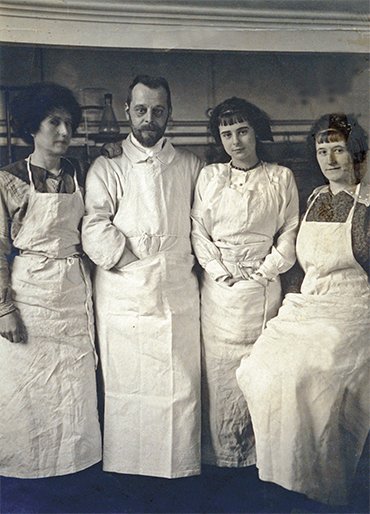 Accused of plagiarism, over the years d’Hérelle was publishing detailed accounts of the history of his discovery, which he actually made back in 1910. He was then in Mexico, in the state of Yucatan, when a locust invasion began. Fortunately, there was an epidemic among the locusts. D’Hérelle went to corn fields and collected diseased insects with severe symptoms of deadly diarrhea. He inoculated the faeces of diseased and dead insects to find coccobacilli, the microorganisms that caused the deadly infection of the locusts. After examining the petri dishes with the seeds, he found anomalies in the growth of the microbial culture, i.e., round-shaped transparent areas two or three millimeters in diameter, on a nutrient agar surface. He scraped these transparent plaques from the agar surface and prepared smears. However, he saw nothing under the microscope. Based on that and other experiments, he came to the conclusion that the agent causing the formation of the transparent areas on the microbial culture must have been so small that it could pass freely through bacteria-retaining filters.
Accused of plagiarism, over the years d’Hérelle was publishing detailed accounts of the history of his discovery, which he actually made back in 1910. He was then in Mexico, in the state of Yucatan, when a locust invasion began. Fortunately, there was an epidemic among the locusts. D’Hérelle went to corn fields and collected diseased insects with severe symptoms of deadly diarrhea. He inoculated the faeces of diseased and dead insects to find coccobacilli, the microorganisms that caused the deadly infection of the locusts. After examining the petri dishes with the seeds, he found anomalies in the growth of the microbial culture, i.e., round-shaped transparent areas two or three millimeters in diameter, on a nutrient agar surface. He scraped these transparent plaques from the agar surface and prepared smears. However, he saw nothing under the microscope. Based on that and other experiments, he came to the conclusion that the agent causing the formation of the transparent areas on the microbial culture must have been so small that it could pass freely through bacteria-retaining filters.
In fact, it is not surprising that d’Hérelle, who was an obscure scientist at that time, did not rush to publish his observations until he got another proof of his discovery, i. e., the dysentery bacteriophage. In any case, unlike Twort, he not only gave in his first publication an accurate description of the bacteriophage phenomenon but also predicted the possibility of creating a “live drug.” This thought might have also come from his revolutionary idea to use living microorganisms for pest control.
Always fast and resolute in dealing with practical challenges, this man soon showed again that he “practiced what he preached.” Only two years later, d’Hérelle together with Prof. Victor Henri Hutinel conducted in a children’s hospital (Hôpital des Enfants-Malades) in Paris the first experiment to treat dysentery with bacteriophages. To ensure the safety of the new drug, d’Hérelle and his staff had also taken a substantial dose, as was a common practice at that time. This clinical trial was preceded by successful experiments on hens with typhus, in which a therapy with phages isolated from hen droppings helped reduce the mortality rate from 95 to 5 %!
On the top
The very first paper published by d’Hérelle created a great stir in the scientific community, generating a wave of studies by ever more scientists who were proving him right. Phage therapy began to gain a foothold in the medicine of Western Europe, and d’Hérelle himself strengthened his position at the Pasteur Institute, where he had worked for a few years as an unpaid assistant. However, even then the life of this adventurous man with a hot-tempered and restless disposition often carried him far away from the silence of an academic laboratory: he spent his days in research expeditions organized by the Pasteur Institute in Argentina, Algeria, Turkey, Tunisia and Mexico. Moreover, he made many of his subsequent scientific travels at his own expense.
Surprisingly, despite all the evidence that phages are living beings, the review of 150 most significant works on phage therapy published by the Board of Pharmacy and Chemistry of the American Medical Association in the early 1930s openly stated that experimental studies of the lytic agent called bacteriophage did not disclose its nature. D’Hérelle’s theory that this material is a live virus parasitizing in bacteria had not been proved. On the contrary, evidence suggested a non-live material, presumably an enzyme (Eaton and Bayne-Jones, 1931). Such an evaluation could not but have an adverse impact on investment in bacteriophage research and production, at least in the United StatesD’Hérelle resigned from the Pasteur Institute in 1925 for reasons that are still unclear (presumably, due to differences of opinion with the institute’s leadership). In the Netherlands, where he held a temporary position of curator at the Institute of Tropical Pathology, he published his first book and received an honorary doctorate from the University of Leiden. In Egypt, he was fighting infectious diseases as a director of the bacteriological laboratory at the quarantine station in Alexandria and as a League of Nations Health Service inspector. In India, he used phage therapy to treat cholera... D’Hérelle treated cholera patients in a simple medical tent in the slums rather than at the hospital organized by European standards. He did so on principle because he believed that bacterial infections should be studied where they arise rather than under sterile conditions. As a result, d’Hérelle and his team were able to achieve a nearly eightfold lower mortality from this serious bacterial disease.
In 1928, d’Hérelle made a triumphal science tour across the United States, where he delivered a series of lectures at Stanford University (his discussion on bacteriophages was published as a separate monograph) and then took a permanent position at Yale, one of the oldest and most famous research and educational institutions in the United States.
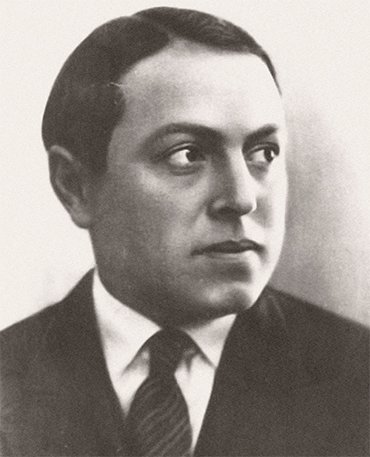 At that time in Paris there was a successfully operating private laboratory set up by d’Hérelle for the production of phages and managed by his son-in-law. In 1933, d’Hérelle came back to his Parisian laboratory. At that time he was already a venerable scholar distinguished by prestigious academic titles and awards, such as the Leeuwenhoek Medal, which is awarded only once every ten years. Previously, this award was also given to d’Hérelle’s idol—the great Louis Pasteur, who, by the way, had no formal medical or biological education either. In those years, d’Hérelle was, as already mentioned, repeatedly nominated for the Nobel Prize, but he never reached the finish line.
At that time in Paris there was a successfully operating private laboratory set up by d’Hérelle for the production of phages and managed by his son-in-law. In 1933, d’Hérelle came back to his Parisian laboratory. At that time he was already a venerable scholar distinguished by prestigious academic titles and awards, such as the Leeuwenhoek Medal, which is awarded only once every ten years. Previously, this award was also given to d’Hérelle’s idol—the great Louis Pasteur, who, by the way, had no formal medical or biological education either. In those years, d’Hérelle was, as already mentioned, repeatedly nominated for the Nobel Prize, but he never reached the finish line.
Why would a successful Western scientist at his professional zenith turn his eyes “to the East”? In the 1930s, the French Communist Party was gaining momentum, and the attitude towards the Soviet Union was a litmus test for politicians and governments who came to power. However, apart from his pro-Soviet disposition and restless nature, one of the main motivations for d’Hérelle to go to the Soviet Union was his close relations with the Georgian microbiologist George Eliava.
“I am needed in Georgia!”
This period in the life of Félix d’Hérelle, which he kept quiet about until the end of his days, in contrast to the numerous reminiscences about his scientific expeditions around the world, was briefly yet accurately described by the American microbiologist Donna H. Duckworth: “...everywhere d’Hérelle was, there were fireworks <...> The fireworks materialized rather unfortunately in Russia, where d’Hérelle went several times during the 1930s to found institutes for the study of bacteriophages. During one of his trips his trusted associate, Eliava, was arrested and shot.”
Not entirely accurate in facts, Duckworth was right in essence. Félix d’Hérelle was truly devastated by what happened to Eliava also because, being almost twenty years older than the Georgian scientists, he treated him like a son.
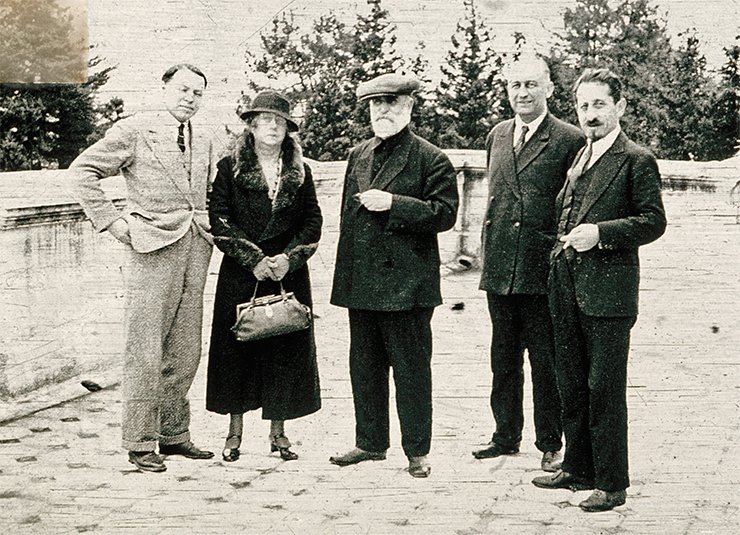
The Eliavas were a well-known Georgian family. Born in a wealthy family of a doctor, Gogi was a free-thinker from a young age. Expelled from Odessa University for his revolutionary activities, he entered the Faculty of Medicine at the University of Geneva, but had to finish his education in Moscow because of the First World War. Right after the university, he got to the Caucasus front in Trabzon as the head of a bacteriological laboratory. It was there, in 1917, that Eliava discovered, purely incidentally and independently, while working with bacterial seeds, the bactericidal action of the water in the Kura River. At once he realized the significance of this phenomenon. It was the same year when d’Hérelle went public with his discovery, and it was clear that this phenomenon could be explained by the action of the cholera bacteriophage.
THE VIRUS OF HOLINESS Many religions ascribe miraculous properties to water, and the most affluent source of this holy fluid is undoubtedly India’s Ganges River, one of the largest lowland rivers in South Asia. Even in the 19th century, Englishmen returning from India brought home some water from this great river, although they did it, first and foremost, for utilitarian reasons: Ganges water did not spoil, mysteriously, during the travel, staying “sweet and fresh” for weeks (Hollick, 2007). At that time, it really looked like a miracle.
Many religions ascribe miraculous properties to water, and the most affluent source of this holy fluid is undoubtedly India’s Ganges River, one of the largest lowland rivers in South Asia. Even in the 19th century, Englishmen returning from India brought home some water from this great river, although they did it, first and foremost, for utilitarian reasons: Ganges water did not spoil, mysteriously, during the travel, staying “sweet and fresh” for weeks (Hollick, 2007). At that time, it really looked like a miracle.
The first man to divulge the secret of holy water from the Ganges River was an English scientist Edward Hankin, who published in Annals of the Pasteur Institute an article entitled “The bactericidal action of waters of Jumna and Ganges on the cholera microbe” (1896). He showed that autoclaved Ganges water had no effect on Vibrio cholerae, but filtered or unfiltered water contained something that could kill cholera. The antimicrobial properties of the Ganges water were confirmed by the fact that cholera did not spread downstream, although in the Hindu tradition, bodies of the dead (including from cholera) were submerged into the sacred river where the dead were to find their last resting place. Hankin examined water samples taken from the Ganges River inside and outside a city. He found that the quantity of V. cholerae downstream of the city was higher, but not much higher. The scientist also noted that half-burned corpses thrown into the river were preserved remarkably well: they would have decomposed much faster in the Thames.
The discovery of phages led to the question whether they were the cause of the special properties of the Ganges water. Indeed, by the 1980s the holy river had been found to contain viruses that devour Klebsiella, Salmonella, E. coli, V. cholerae, and the causative agent of bacillary dysentery. Moreover, it turned out that different parts of the river had different phage communities (Mukherjee et al., 1984). However, no natural enemy of such a popular pathogen as Staphylococcus aureus was found in the Ganges.
Research showed that the Ganges water retains its special properties for much longer than it was thought by British sailors, whose voyages lasted a few months. The Ganges water demonstrated antimicrobial activity against an E. coli strain after years of storage: these microbes showed a worse survival rate in the Ganges water that had been stored for eight years than in boiled or filtered water; even after 16 years of storage, the Ganges water was “ahead” of boiled water (Nautiyal et al., 2008).
Nevertheless, the Ganges water must not be taken as medicine: apart from bacteriophages, it contains bacteria, including pathogenic ones, and household and industrial waste. This, however, does not prevent believers from drinking this water and using it for ritual purposes. Internet stores offer to deliver holy water to any point around the world. They sell water both from the Ganges River and from other sacred rivers of India, such as Godavari, Yamuna, Narmada, etc. For example, a 50 ml bottle of holy water costs 1 USD.
Not only Hindus but also Christians make money by selling holy water. There are websites offering water from the Jordan River, or “holy water blessed by the Pope.” However, if you want to order water from Zamzam, a holy well of Muslims in Mecca, it is not on sale: Saudi authorities have banned the export of this water. By the way, it was tested years ago by Hankin himself, who found Zamzam water to be powerless against cholera. Subsequently, it was shown that this water could help reduce heartburn, but in 2011 it became clear that this holy water contains a lot of arsenic, nitrates, and potentially dangerous bacteria. The sacred Jordan River, worshiped by Christians, cannot boast of cleanliness either; moreover, it also contains plenty of salts. However, believers all over the world do not worry about these trifles, and the flow of those wishing to connect with holiness does not dry out.
and Fundamental Medicine, Siberian Branch,
Russian Academy of Sciences, Novosibirsk)
They met in Paris at the Pasteur Institute, where Eliava traveled repeatedly since 1918 to work side by side with the discoverer of bacteriophages. However, when he was offered to stay permanently in Paris, the young scholar and patriot simply said: “I am needed in Georgia.”
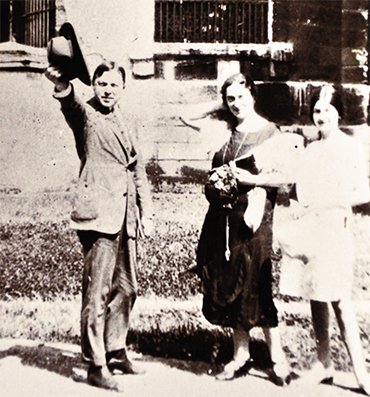 Supported by d’Hérelle, Eliava organized in Tiflis (from 1936, Tbilisi) the first Soviet laboratory for the study of bacteriophages, which was transformed in 1923 into the Institute of Bacteriophages. The scientists’ dream to set up an international center for phage therapy in Georgia with its own production facilities and experimental clinics began to come true with the support from Sergo Ordzhonikidze, who was then a people’s commissar of heavy industry. For a few years, d’Hérelle was supplying equipment and library materials to the Institute, mostly at his own expense, and in 1933–1935 he came personally to Tiflis and worked at the institute for two semesters, also free of charge. A true master of all laboratory skills, including glass-blowing works, d’Hérelle was working with his usual fanaticism from morning till night, never showing any signs of fatigue.
Supported by d’Hérelle, Eliava organized in Tiflis (from 1936, Tbilisi) the first Soviet laboratory for the study of bacteriophages, which was transformed in 1923 into the Institute of Bacteriophages. The scientists’ dream to set up an international center for phage therapy in Georgia with its own production facilities and experimental clinics began to come true with the support from Sergo Ordzhonikidze, who was then a people’s commissar of heavy industry. For a few years, d’Hérelle was supplying equipment and library materials to the Institute, mostly at his own expense, and in 1933–1935 he came personally to Tiflis and worked at the institute for two semesters, also free of charge. A true master of all laboratory skills, including glass-blowing works, d’Hérelle was working with his usual fanaticism from morning till night, never showing any signs of fatigue.
The construction and equipment of the institute’s new building was in full swing at that time; a two-story double house (“French cottage”) for two families—d’Hérelle’s and Eliava’s—was built in the institute’s park. Apparently, at first d’Hérelle had firm plans to move to Georgia and even dedicated to Stalin his new book The Bacteriophage and the Phenomenon of Recovery, which was translated into Russian by Eliava and published in 1935. However, by that time d’Hérelle must have grown disenchanted with the country of “universal justice and equality” and taken a grasp of its realities, including the brutal struggle for power within the USSR Communist Party. In any case, after his sudden departure in 1935, he never came back to the banks of the Kura River although he continued to support the institute by sending equipment. One can say he was lucky to escape the subsequent repressions inflicted on foreign specialists who were accused of espionage.
Fate was less kind to d’Hérelle’s closest associate: in 1937 Eliava was arrested on the orders of Lavrenty Beria, then the First Secretary of the Communist Party of Georgia, and accused of spying for the French government and trying to spread an epidemic. On July 9, 1937 at a closed session of the Supreme Court of the Georgian SSR, Eliava, along with other “nationalist deviators” of the “Trotskist center of espionage and sabotage,” was sentenced to death.
Eliava was shot on July 26 of the same year. His wife shared the fate of her husband, and her only daughter Hanna, 24 years old, who was adopted by Eliava, was sentenced to a five-year exile in Kazakhstan.
...AND DIED ON THE SAME DAY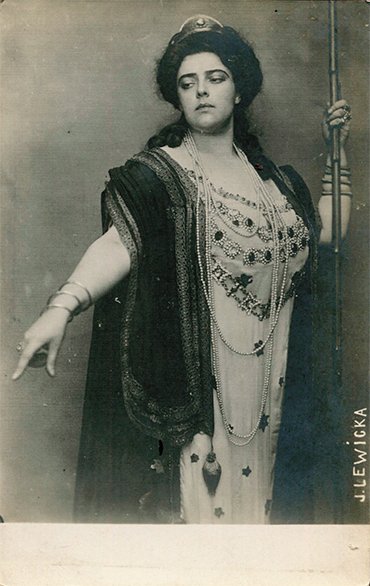 There is a lot of speculation and rumors about the causes of death of George Eliava, the director of the Tbilisi Bacteriophage Institute and a scientist of world renown. One of them might by his relationship with Lavrenty Beria, who was also born in West Georgia. Eliava is rumored to have been on friendly terms with Beria (some even thought that they were schoolmates, despite their seven-year age difference). There is a legend that attributes the antagonism between the two men to a love triangle: the “playboy” Eliava fell in love with an opera actress of Polish origin, who toured in Georgia and was courted by Lavrenty Beria himself.
There is a lot of speculation and rumors about the causes of death of George Eliava, the director of the Tbilisi Bacteriophage Institute and a scientist of world renown. One of them might by his relationship with Lavrenty Beria, who was also born in West Georgia. Eliava is rumored to have been on friendly terms with Beria (some even thought that they were schoolmates, despite their seven-year age difference). There is a legend that attributes the antagonism between the two men to a love triangle: the “playboy” Eliava fell in love with an opera actress of Polish origin, who toured in Georgia and was courted by Lavrenty Beria himself.
However, all the available evidence, as well as memories of Eliava’s granddaughter, Natalia Devdariani, shows that there was only one opera actress in George’s life—his wife Amelia (who had a stage name Melania) Vol-Lewicka-Eliava. George met this beautiful Polish woman, who became the love of his life, long before the described events.
Amelia Vol was born in Warsaw, received her education in London, and later married her professor Mikolai Lewicki. Endowed with a beautiful soprano and excellent technique, she starred as a leading soloist on the stage of the Warsaw Opera in 1910–1912. According to the press, apart from a voice of unusual beauty, enlivened by emotion and a great deal of temperament, she had excellent looks—feminine elegance, an inspiring face and perfect height.
In 1913, Amelia gave birth to a daughter, and two years later her family moved to Russia to avoid the hardships of World War I. She performed successfully first in Kiev and then on the stage of the Tiflis Opera and Ballet Theater, which was the center of the Georgian musical life.
In 1918, the 33-year-old diva met the 26-year-old Gogi Eliava. A great lover of music, he had not missed a single performance by Amelia, but they met accidentally through common friends. According to Natalia Devdariani, it was Eliava’s great persistence that made her grandmother divorce from her husband and, two years later, marry the brilliant Georgian bacteriologist.
These events in their lives are like chapters of a novel. First, there were letters: Eliava went to the Pasteur Institute in Paris. Then, the letters stopped coming, which was a usual thing during the Civil War, and his trip lasted longer than expected. Amelia decided to return to Poland and went, together with her daughter, to Batumi to board a ship. One morning, they saw a man on the deck of a ship that had just arrived from Marseilles—that was Gogi, who was vigorously waving his hat,—he was sure that Amelia had come to meet him at the port. They would never part again...
In 1937, the Eliavas were arrested. Obviously, Beria did play a big role in this arrest because he became a mortal enemy of Eliava even before the establishment of the Bacteriophage Institute, when Eliava went over Beria’s head and sent a memorandum directly to Stalin. In addition, Gogi, a hot and temperamental man, was never one to mince his words when faced with limitations and injustices: the violent disputes between Eliava and Beria were witnessed even by d’Hérelle.
As for the “feminine matter,” Beria could have been jealous of Eliava because of his friend’s wife, Tinatin Jikia, who worked at the library of the Institute of Bacteriophages. Rumors say that Beria had unsuccessfully courted for years this blue-eyed beauty with chiseled features, a muse of artists and poets in Tiflis. According to Eliava’s granddaughter, their paths crossed in hospital: Eliava and Beria came to visit Tinatin on the same day, carrying bouquets of flowers... According to Tinatin’s memoirs, her husband received an anonymous letter saying that she was cheating on him with Eliava; the couple were sure that Beria had a finger in the pie.
In the fall of 1936, Vladimir Jikia, a hydraulic engineer, was falsely accused of treason. He was soon executed as an “enemy of people,” and a year later Tinatin herself was sent to a detention camp.
George and Amelia Eliava were shot on July 26, 1937. Despite all the odds, they had lived a happy, albeit a short, life and died on the same day...
The irony of fate: when Eliava was shot, the French cottage, built to be a happy home for the families of the two outstanding microbiologists, was handed over to the Georgian KGB and surrounded with a high iron fence.
When dreams do not come true
We can only guess how d’Hérelle reacted to the death of his closest and most faithful assistant and friend. His position in Paris had become shaky by that time although he finally managed to prove, in collaboration with the Pasteur Institute and the Radium Institute, that a bacteriophage was a virus to put an end to his long-time dispute with the Nobel prize winner Jules Bordet, who was convinced that bacteriophages had enzymatic nature (Bordet’s conviction stemmed from his outstanding discovery of the phenomenon of latent viral infections in bacteria).
NIKOLKA BULGAKOV, A BACTERIOLOGIST One of d’Hérelle’s close associates was none other than Nikolai Bulgakov, one of the brothers of the famous Russian writer Mikhail Bulgakov. Nikolai was the prototype of the cadet Nikolka Turbin in his novel The White Guard. After the Crimean evacuation, cadet Bulgakov went to Yugoslavia, where he graduated with excellence from the University of Zagreb. During his studies, he worked as a medical aid-man for patients with smallpox and typhus and as a lead singer in a students’ balalaika orchestra. After his graduation, he was left at the Department of Bacteriology, where he got interested, together with Dr. Sertich, in the recently discovered bacteriophage viruses.Their work was noticed by d’Hérelle, who had established in Paris a laboratory for the study and production of phage drugs, and the young researchers became his coworkers. D’Hérelle recalled that one day he sent from London a streptococci culture with a request to find the corresponding bacteriophage. This task was accomplished in just two weeks, for which, according to d’Hérelle, one had to be Bulgakov, with his abilities and precise technique.
Bulgakov’s work involved not only the isolation of new natural bacteriophage races but also the design of equipment for simultaneous automatic sterile filling of several hundreds of vials. In 1936, Bulgakov replaced d’Hérelle in Mexico, where, during a period of six months, he not only organized a bacteriological laboratory and established a training system but also learned to speak Spanish and began to lecture in this language. During the German occupation, he was arrested as a Yugoslav citizen and sent to a camp as a hostage. In the camp, Bulgakov worked as a doctor, helping other inmates. He was awarded with the Order of Yugoslavia for his participation in the resistance
Firstly, the founding father of phage therapy was not forgiven for his work for communists; secondly, the practical application of bacteriophage drugs, which were produced in the 1920–1930s by many private firms, often fell short of expectations. The poor repeatability of phage treatment results was largely due to technical issues; moreover, many physicians and entrepreneurs had very little understanding of microbiology and the very basics of biology. The situation was almost ridiculous: when d’Hérelle once tested two dozen commercial bacteriophage drugs, he found that none of them contained any active viruses!
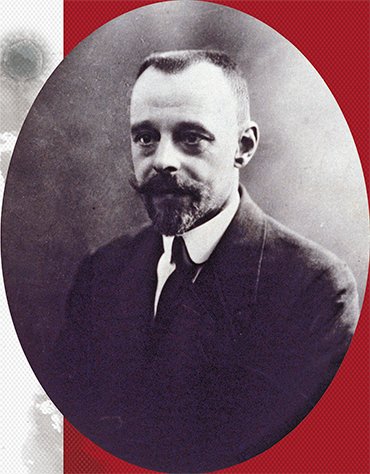 Misdiagnoses, incorrect techniques of preparation, preservation, storage and use of the drugs, the lack of control over the treatments... There was a long list of shortcomings that undermined the authority of phage therapy and diminished investment in this area.
Misdiagnoses, incorrect techniques of preparation, preservation, storage and use of the drugs, the lack of control over the treatments... There was a long list of shortcomings that undermined the authority of phage therapy and diminished investment in this area.
D’Hérelle was in Paris at the onset of World War II. He began, together with his wife and daughters, to produce drugs for the Allied Armies. After the occupation of Paris in 1940, the scientist, who was over seventy then, refused to organize the production of bacteriophage drugs to treat wound infections in German military, for which he was kept under house arrest until the liberation of Paris in 1944.
Five years later, the pioneer of bacteriophagology passed away, virtually in oblivion, from pancreatic cancer and was buried near Paris. Incidentally, a year later another man passed away—Frederick Twort, the coauthor of the discovery of bacteriophages, whose laboratory was blasted during the war.
Eliava was shot; d’Hérelle died... After World War II, the majority of scientists and doctors started to forget about bacteriophages: d’Hérelle’s idea of a universal “live” bacteriological weapon was virtually killed by a new legend of the 20th century, antibiotics. However, things were different in the Soviet Union: the Institute of Bacteriophages, which was merged after the death of its founder with the Institute of Microbiology and Epidemiology, indeed became the leading (and the only!) world center of therapeutic phage research. During World War II, bacteriophages were widely used in the Soviet army to treat wounds and prevent outbreaks of intestinal diseases.
From the preface to the book “The Bacteriophage and the Phenomenon of Recovery” (1935) by Félix d’Hérelle, Honorary Professor, Faculty of Natural Sciences, Tiflis State University (this book was translated into Russian and Georgian by Eliava):“People of science can be divided into philosophers (who are often forerunners of real knowledge) and scientists in the narrow sense of the word, those who patiently, stone by stone, build the grand edifice of experimental science.
“But ‘experimental’ does not mean ‘infallible’: experiment may also lead one astray; it is only the result that is the supreme criterion for the validity or invalidity of a chosen experimental technique.
“For people who have dedicated their life to experimental medicine, this result is to minimize the amount of physical suffering; for a fighter who has devoted his life to the science of social development, the goal is to maximize the welfare and happiness of all mankind <...>
“In both cases, it is only the practical result that can indisputably tell whether one has chosen the right path...”
In subsequent decades, the Soviet Union was successfully developing industrial production of targeted phages and phage cocktails. Tons of pills, liquid preparations, and aerosol cans containing carefully selected phage mixes for therapy and prevention were delivered every day to different parts of the vast Soviet country. Bacteriophages were used in hospitals and sold in pharmacies both as prescription and non-prescription drugs. There were about 1,200 researchers on staff at the Eliava Institute in Tbilisi, which was called after the name of its founder. The institute’s “museum,” the world’s largest library of bacteriophages, contained more than 3,000 viral clones, including those from d’Hérelle’s Parisian collection. In the late 1980s, a research and educational organization Bakteriofag was founded in Tbilisi. The organization had production facilities in Ufa, Khabarovsk, and Gorky (Nizhny Novgorod). The production of bacteriophages was also organized in socialist countries such as Poland and Czechoslovakia.
Nevertheless, the international scientific community had long treated the “eaters of bacteria” as an inconvenient (Soviet!) substitute for antibiotics, almost until the end of the 20th century, when the humankind faced the full force of the drug resistance of bacteria, which unleashed a real arms race. However, this was a different time, different people, and a different story...
References
Bacteriophages, Part B. 2012. Ed. Szybalski W. T., Lobocka M. Advances in Virus Research. Academic Press. V. 83. 496 p.
Lysogorov N.V. Kogda otstupaet fantastika. Seriya Evrika (When Science Fiction Retreats. The Eureka Series). Moscow: Molodaya Gvardiya. 1968 [in Russian].
Shraer-Petrov D.P. Okhota na ryzhego d’yavola. Roman s mikrobiologami (Hunt for the Red Devil. A Novel with Microbiologists). Moscow: Agraf. 2010 [in Russian].
Summers W. C. Félix d’Herelle and the Origins of Molecular Biology. New Haven and London, Yale University Press. 1999. 230 p.
Zemskaya E. A. Mikhail Bulgakov i ego rodnye: Semeinyi portret (Mikhail Bulgakov and His Relatives: A Family Portrait). Moscow: Yazyki slavyanskoi kul’tury. 2004 [in Russian].
The editors thank B.A. Ryzhikov (NPO Mikrogen, Moscow, Russia), N. Devdariani (Tbilisi, Georgia) and the Pasteur Museum (Paris, France) for their help in preparing this publication


